Are you wondering where to rent a kimono in Osaka? While the third-largest city in Japan is famous for its culinary heaven, you can also have a fantastic time participating in Japanese culture.
There are many rental shops with a wide selection of kimonos to choose from, and they make for beautiful photos on the streets of Osaka. Kimonos are beautiful garments typically worn for special occasions such as New Year celebrations and weddings.
Where To Rent Kimono in Osaka
If you’re looking for the perfect kimono, I have a list of shops I recommend for an enjoyable experience. Many of these establishments also offer a yukata rental, typically worn in the hot summer months.
Kyoto Kimono Rental Wargo
I highly recommend Kyoto Kimono Rental Wargo for your traditional Japanese kimono needs. As one of the biggest companies, they have stores in many locations around Japan.
In addition, because they cater specifically to the foreign community, they have a large selection of kimonos. They also have garments available for men and children.
They have a convenient location outside Shinsaibashi Station.
Kimono Botan Rental Shop
The Kimono Botan Rental Shop is about a 5-minute walk from Tsutenkaku and a one-minute walk from the JR Shin-Imamiya Station. It is a great place to choose from retro kimonos to modern designs.
Vasara Kimono Rental
Vasara Kimono Rental has a convenient location near the JR Osaka Station. You can rent children’s, men’s, or women’s kimono or yukata.
Most kimono rental shops offer free hair styling with a basic plan. The shop is near Ogimachi Park, where you can snap some epic photos of the cherry blossoms in spring.
Kimono and Tsumami-zaiku Workshop
This kimono and Tsunami-zaiku workshop is a must-do when in Osaka! It makes for a great souvenir because you will make a Tsumami-zaiku Kanzashi or hair clip with Japanese Chirimen cloth.
This is of great value since you’ll also get a photo opportunity. The tour will then take a short walk along the charming streets of Japan to Shinsekai and Tsutenkaku Tower.
Kawaii Osaka Kimono Rental and Sales
At Kawaii Osaka Kimono Rental, you can rent the best kimono. They even have furisode kimonos with decorations using gold and silver threads, prestigious designs, and high-quality materials!
I also really like that they have wide size kimonos and additional options like booking a photographer for outdoor photos. After all, you should definitely document your unique kimono experience!
Maikoya Osaka Kimono Tea Ceremony
This Maikoya Japanese Tea Ceremony experience is a private event. However, they’re currently not accepting reservations.
If you’re interested in this special experience, you can join this group class at Osaka Castle.
Rickshaw Ride and Kimono Experience
Come enjoy the beauty of a fully-fledged formal kimono while riding a traditional Japanese rickshaw. During this experience, the driver will take you to interesting places around Shinsekai and help take photos.
Yukata Try-On Workshop
This Yukata Try-On Workshop is great if you’re on a budget. In this hour-long experience, available in English, you’ll meet in Awaza, close to Hommachi station.
With the standard plan, you can choose your own yukata design. They will even teach you how to put on this traditional everyday wear.
You can also add accessories such as an obi (sash), zori (Japanese sandals), and zobi (socks). Afterward, you can explore the city and photograph yourself in your new outfit.
Kimono Rental and Osaka Castle Tour
If you want to experience traditional Japanese culture, this special plan includes a kimono rental and a photography tour at Osaka Castle.
Walking around historic streets in a beautiful kimono is a special experience. In fact, the patterns and colors of kimonos have meanings for each season and event, so knowing those meanings is one of the joys of wearing them.
They are open from 8 am to 8 pm, but be aware that there will be an additional cost of 1,500 yen per hour for the later hours, from 6 pm to 8 pm.
Rent a Kimono and Explore a Geisha House
I recommend you rent a kimono from Wargo and then take this afternoon day trip to Kyoto and meet an actual geisha in training.
Geisha usually work at night and entertain in the Kyoto district. Make sure you get photos at Yasaka Shrine and Kiyomizu Temple.
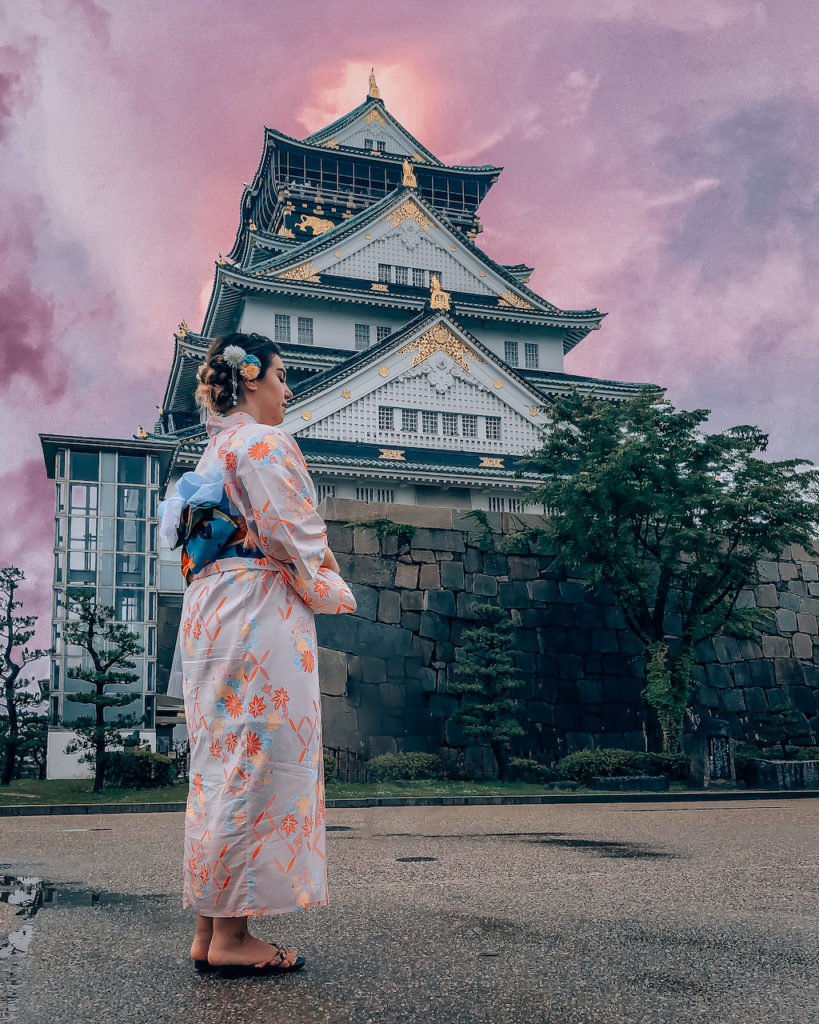
Different Types of Kimono
There are nine different types of beautiful kimono. However, I’m going to highlight the most the most common ones still seen today.
My favorite kimono is the furisode with bright traditional patterns. If you’re traveling to Japan, check out my guide on renting a kimono in Tokyo.
Furisode Kimono
The name “furisode” literally translates to “swinging sleeves,” referring to the long, flowing sleeves. The sleeves are seen as a symbol of grace, youth, and vitality.
Unmarried women usually wear this type of kimono. It’s the perfect choice if you’re single and ready to mingle!
This type of formal kimono is also paired with a fukuro obi, which is a prestigious obi made of two different fabrics for the front and back. They are sewn together in the shape of a sack.
Hakata Kimono
This unique style is typically worn by shrine priestesses or priests. It is also worn by young men and women when they are of age.
When I lived in Japan, they were worn by the graduating classes’ homeroom teachers.
Houmongi
This is a semi-formal kimono. The soft hues of the high-class houmongi are meant to show elegance and grace.
The captivating scope of motifs is made with an appreciation of harmony. The expansive design usually showcases Japanese scenery.
Tomesode
The Tomesode grade of the kimono is a formal kimono with classic designs worn by married women.
Yukata
Yukata come in a variety of styles with floral patterns. They’re usually made from cotton and are meant to be worn during summer.
They are typically worn with hosu obi, which is a lavish half-width obi.

The Experience
At Kyoto Kimono Rental Wargo Daimaru Shinsaibashi, you can rent yukatas and kimonos. Wargo is a large rental service with stores in major cities such as Fukuoka, Kyoto, Osaka, and Sapporo.
They have plans starting at 3,000 yen for their standard dressing, kimono or yukata accessories, and hairstyle.
When in doubt, leave it to the friendly staff members. Many of them can speak some English if you’re worried about communicating.
How much does it cost to rent kimono in Osaka?
Many kimono rental companies allow same-day reservations (if space is available) and a next-day return. However, you could be charged an additional fee if you rent daily and miss your return time.
Whatever your budget plan, kimono rental shops in Osaka offer simple plans at reasonable prices. Your set plan price will depend on various factors, especially if you choose to get your hair or makeup done.
Parts of the Kimono
A kimono is made of heavy silk and is usually worn during cooler months in autumn, winter, and spring. A yukata is a summer kimono usually made of lighter materials like cotton.
It is more comfortable and breezy during hotter temperatures. This garment is more casual and often worn to summer festivals.
- Nagajuban– A white slip is worn under the kimono. This is practical since it’s very difficult to clean the kimono.
- Hiyoku– These are robes meant to be worn under the kimono. Historically, kimonos had up to twenty layers with various purposes and meanings. Usually, geisha and brides wear their kimono like this.
- Datejime- This is usually worn under your kimono and is a decorative sash.
- Obi– This is a wide silk sash belt worn outside the kimono. They come in many different varieties, and it’s usually super complex to wrap and tie them.
- Tabi– These are white and foot-shaped nonelastic socks that are typically worn with the kimono.
- Zori– Kimono are typically worn with a formal sandal called zori.
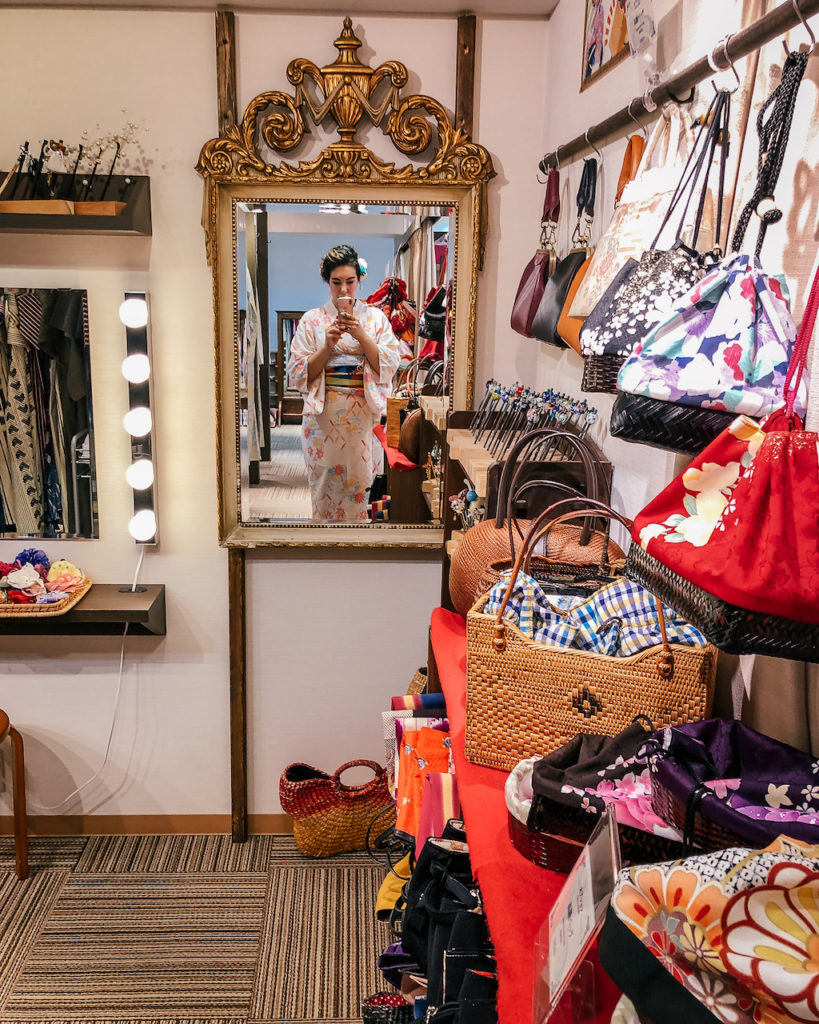
Dressing Process
Before you get dressed, I highly recommend wearing something you can easily move around. On the day of your visit, wear a buttery, soft workout tank top and biker shorts.
Since you’ll be doing a lot of walking, this is sweat-wicking and, for my thicker ladies, keeps you from getting chub rub. In addition, you need to wear comfortable, tighter-fitting clothing so you don’t look huge and bulky.
The attendant will give you a slip called the nagajuban. They will then help you fit into your garment and choose accessories like a Japanese clutch.
Some towel padding will be tied around your waist to give you a straight look and prevent you from sweating into the obi and ruining it. It takes about one hour to get dressed and style your hair.
Kimono and Yukata Sizing
Renting a kimono in Osaka is popular with tourists from all around. Therefore, many shops have bigger-sized kimono and yukata.
If you’re plus size with big hips, you can definitely get a kimono or yukata up to 2x. I would put that at about a US size 14.
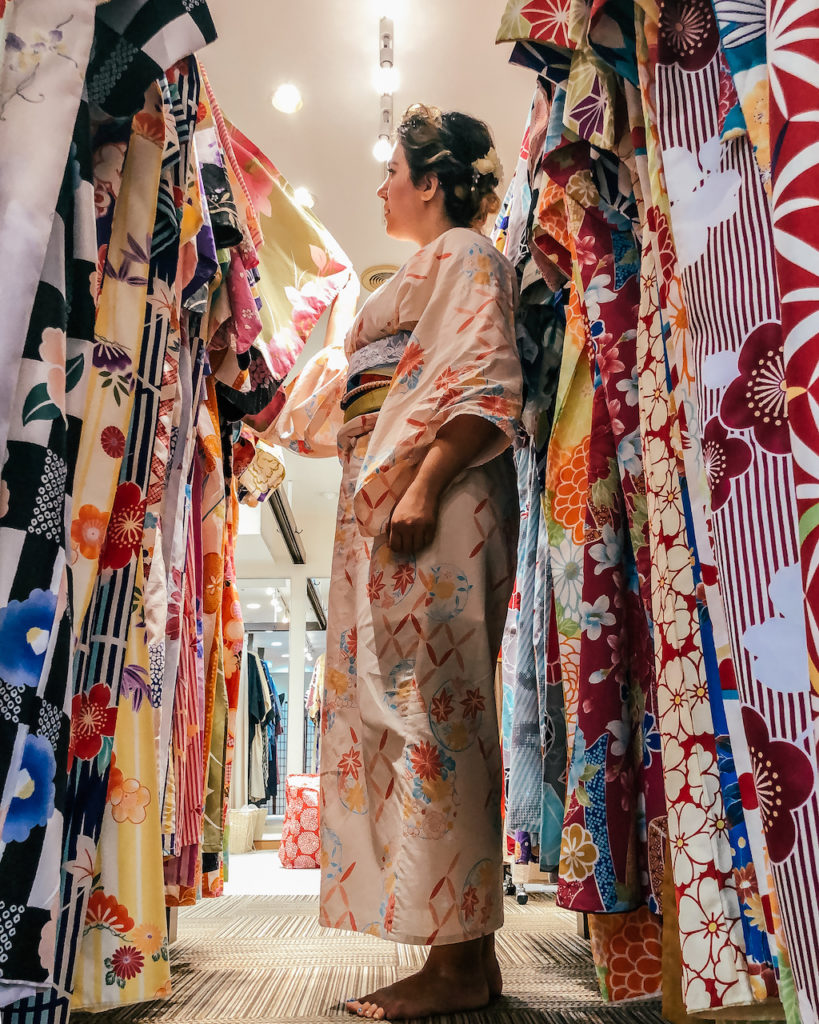
Hair Styling
Once you’re dressed, you can pick out your own hair accessories. The hairstylist will give you a booklet or laminated sheet with photos of available hairstyles.
You can choose everything from a standard hairstyle to more modern styles.
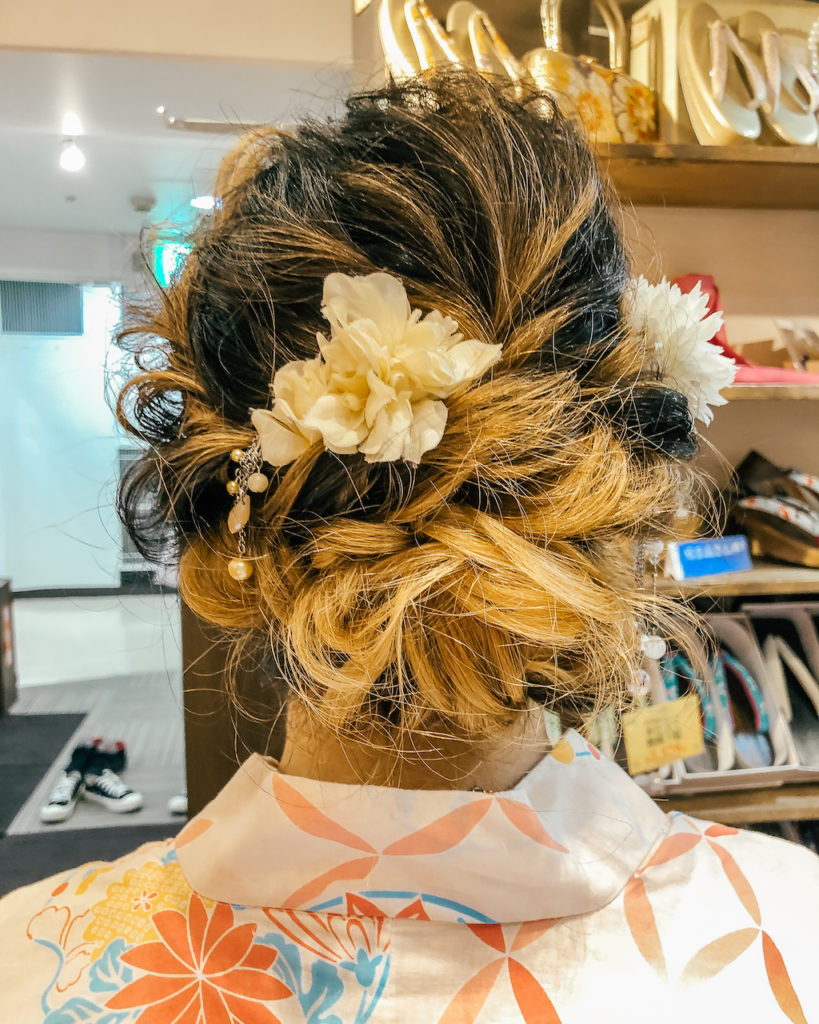
Where to Take Photos in Osaka
There’s tons of places in Osaka for you to get a lot of perfect photos for the ‘gram. I highly suggest going to the Nanba Shrine and Osaka Castle.
The Shrine is actually quite small, but great for photo opportunities because no one is there.
Shiteno-ji Temple
The temple is sometimes regarded as the first Buddhist temple in Japan.
Shinsekai
Shinsekai is also a popular spot to take photos. It’s more modern and one of the best places to play arcade games, shop, and eat.
Nanba Shrine
While on your kimono journey around the city, this small shrine is also great for photos!
Osaka Castle
Osaka Castle is one of the city’s most popular sightseeing spots. It was built by the famous Toyotomi Hideyoshi, who is known for unifying Japan in the late 16th century.
Klook.comFrequently Asked Questions
1. Are there more kimonos in the store?
Many different kimonos are available in the stores versus online. They receive new kimonos every day, so there’s a huge selection to choose from!
The available choices of kimono grades vary by season, how many people rent, and what is available.
2. Can I book a kimono in advance?
Most kimono rental shops recommend booking in advance. Please also make sure you arrive at your reserved time.
3. Can I cancel my booking?
Ensure you cancel two days before your booking so you don’t get a cancellation fee. If you cancel within two days of the booking, you will get charged a fee.
4. Is there anything I should bring to the store?
You don’t need to bring anything extra. The store provides all rental materials for the kimono or yukata.
It gets cold in the winter, so be sure to dress warmly underneath. In the summer, wear tight workout clothes so that you don’t look bulky.
5. Can I book earlier in the morning or later at night?
Early morning dressing is an additional 2,000 yen. You need to call in advance and let them know what time in the morning you want to come.
6. Can they do my makeup?
You should do your makeup before you come to the store because a light plan doesn’t come with it. However, if you have higher-grade kimono plans, you can get your makeup professionally done.
7. Can I return the kimono the next day?
Yes. There is an extra 1,000 yen fee for returning the kimono the next day. Be sure to return it directly to the store.

Is it Gina Bear Approved?
Wearing a yukata is a beautiful experience in Japan. If you’re worried that wearing a kimono in Japan is cultural appropriation, it’s not.
I’ve received many compliments from people (especially older folks) whenever I wear it, and I am praised even more when they find out I speak Japanese.
A traditional kimono rental in Osaka doesn’t have to break the bank.
A beautiful garment, hairstyling, and photos to remember it by are the most priceless memories you can have. I had this special opportunity thanks to Kimono Rental Wargo.

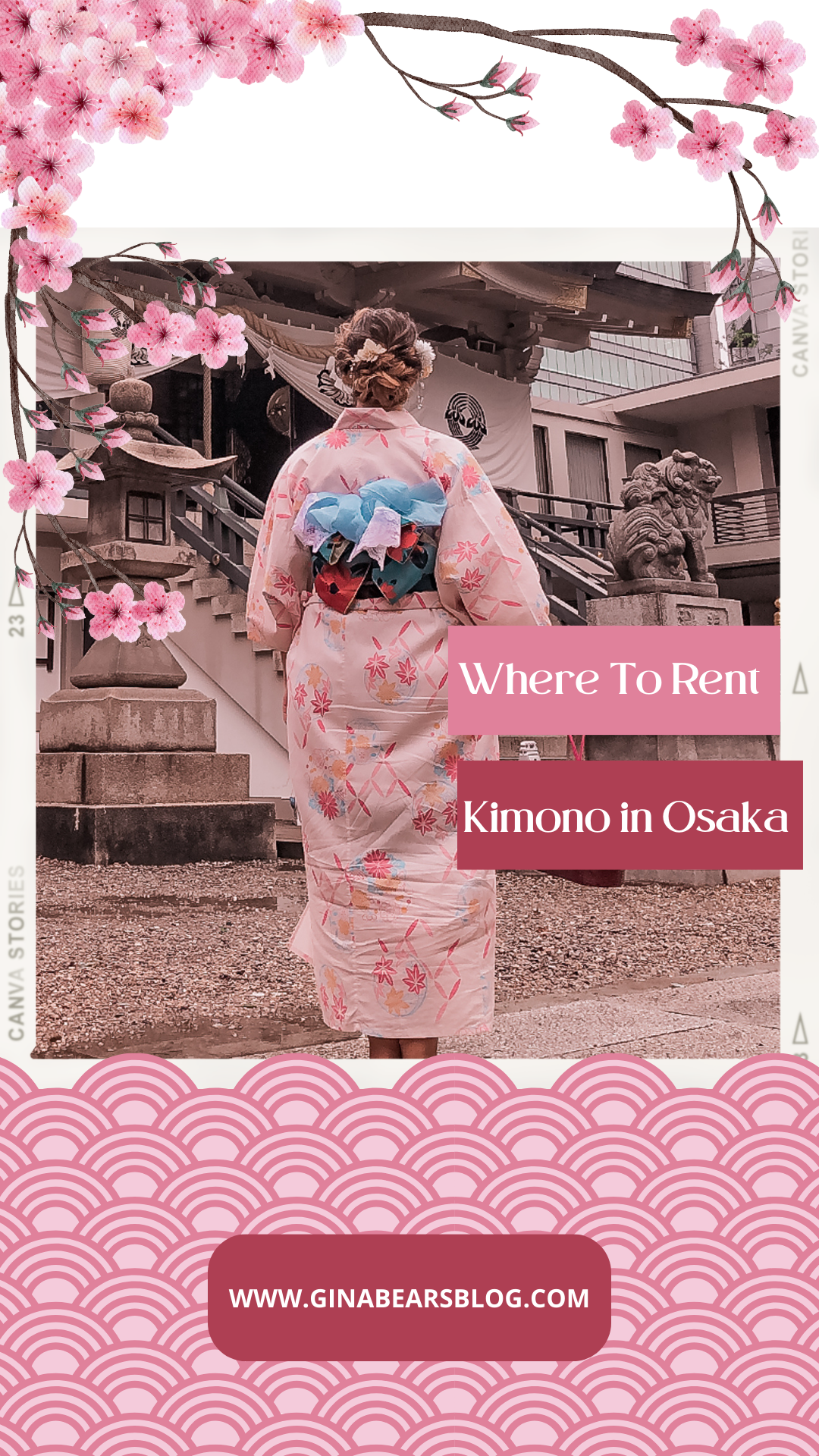
Gina Bear was invited by Kyoto Kimono Rental Wargo to try their yukata in Osaka. As always, all thoughts and opinions remain my own.
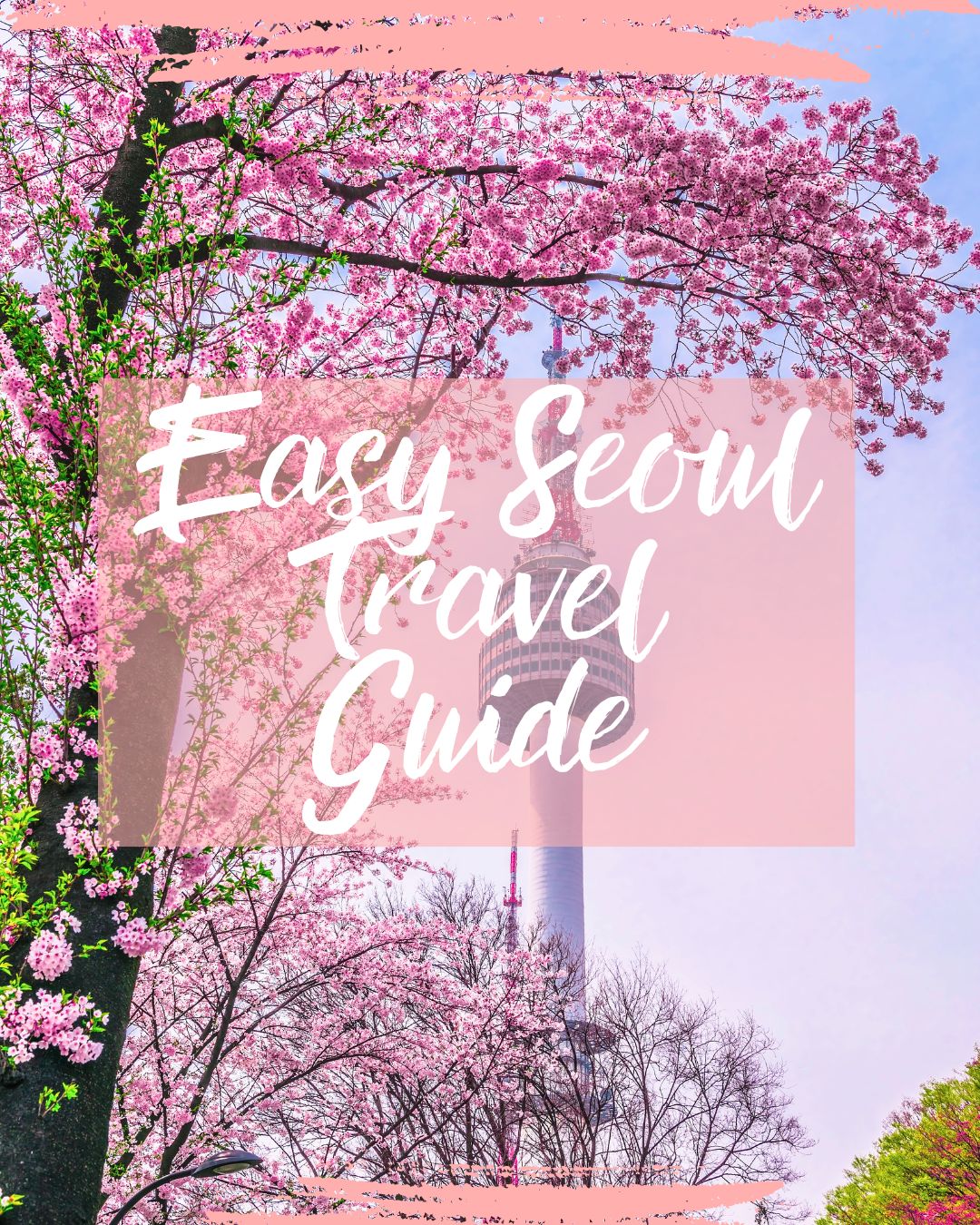
Free Seoul E-Book
Do you love South Korea?
Enter your name and email address and click the button below to receive your Easy Seoul Travel Guide so you can travel like a local!

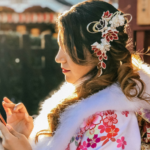
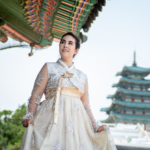
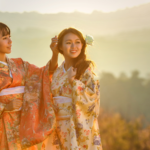

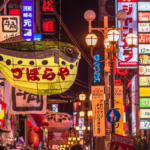
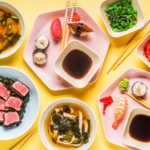
Nicely explained post.Thanks for sharing.